This second itinerary across Sardinian nurseries and naturalistic beauty is set in the Eastern hinterland, a territory of ancient mines, ponds, marshes and hills. You can begin from the West coast in Oristano, famous for its beaches, calcareous promontories and many lagoons inhabited by lots of rare birds. Then, you get to the hinterland, passing through the marvellous Marmilla, a historic Sardinian sub-region where you can still ind wild horses. In the end, you will reach Milis, a rural village on the slopes of Mount Ferru, rich in orange trees, elms, cypresses and rushes, great 18th Century gates and traces of prehistoric human settlements (the nuraghes). From there, you will get to the province of South Sardinia (SU), among small villages, tablelands, gentle hills and waterfalls. The nurseries will surprise you for the variety of their production: succulents, many daylilies, exotic fruits, shrubs, climbing and ornamental trees, local Sardinian species and marvellous juniper topiary hedges.
Alternatively, you can start in Olbia, uniting this itinerary with the first one (Wandering nurseries: from beaches to the nuraghes, Sardinia/1), reaching the nursery Vita Verde/Vivai Saba, 114 km away; or you can move on to the third itinerary, exploring the area around Cagliari (Wandering nurseries: Cagliari and its surroundings, Sardinia/3).
Nurseries
The map indicates the nurseries and the other locations of the suggested itinerary. For each nursery, we indicate its distance from the others, in order to facilitate you in the choice of the ones to visit and their order.
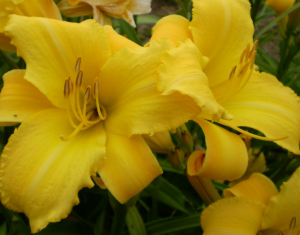
I Campi – Hemerocallis, Milis (Oristano): created in 1996, the nursery is now famous for its collection of daylilies, with modern and reblooming hybrids, botanical species and ancient varieties; but it also produces an interesting collection of unusual Mediterranean plants, plants for dry gardens. They also design and realise gardens.
Distance from other nurseries: km 58 from Congiu Vivai – km 60 from Piante Insolite – km 78 from Vivai Murgia.
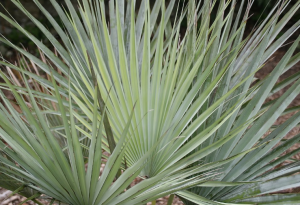
Congiu Vivai, Setzu (South Sardinia): located on the border with Riu Setzu, within an amazing landscape, the nursery specialises in the cultivation of holm oaks and palms, among which about 200 specimens more than 5 m tall of Washingtonia filifera, Phoenix canariensis, Brahea (vary rare, with silver leaves), Cycas revoluta, Chamaerops humilis and other species, protected by windbreak hedges of Melaleuca armillaris, holm oaks, carob trees, Quercus coccinea and Schinus molle.
Distance from other nurseries: km 16 from Piante Insolite – km 58 from I Campi – km 42 from Vivai Murgia.
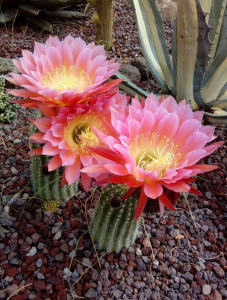
Piante INsolite di Fabrizio Grelli Piante grasse da collezione, Pauli Arbarei (South Sardinia): established by Fabrizio Grelli, it is specialised in the production and cultivation of exotic fruits (argan, avocado, Brachichyton, guava, Cordia dichotoma, macadamia, passion fruit, pomegranate ‘Gelasio’ – with huge fruits -, pecan, papaya, tamarillo), Ginko biloba, Schinus molle and Jacaranda, collectible cactuses, flowering shrubs and vines, ancient Sardinian bearer trees.
Distance from other nurseries: km27,5 from Vivai Murgia – km 60 from I Campi – km 16 from Congiu Vivai.

Murgia Vivai, Villacidro (South Sardinia): it offers more than 600 ornamental plants, among which many Mediterraneans, cultivated following the Air-pruning method, that is with hanging boxes so that the roots would not come out of the pot, thus granting excellent plant material, especially fit for reforestation and environmental recovery.
Distance from other nurseries: km 78 from I Campi – km 42 from Congiu Vivai – km 27,5 from Piante INsolite.
Once you get there, tou can connect to the third Sardinian itinerary, Wanderin nurseries: Cagliari and its surroundings (Sarsinia/3), reaching Vivaio di Antonello Atzeni, 30 km away.
Gardens, naturalistic oasis and walks along the way
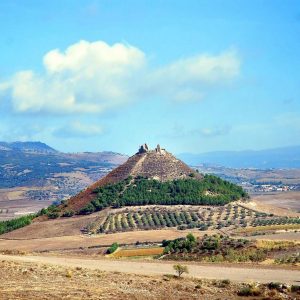
La Marmilla: this historic South-central Sardinian sub-region is located between the Campidano plain and Mount Arci and is characterised by round hills, small valleys, and uneven basalt tablelands, among which Giarre, where wild horses live among water basins, wild buttercups and cyclamens. There is also the amazing and wild Funtanamela forest in Laconi (with its ancient holm oaks, laurel sumacs, filireas and rockroses, inhabited by Sardinian deers) and the sacred wood of Santa Maria Bangargia (3 km from Collinas), where elms, poplars, secular olive tree and laurel sumacs grow. Also, you can’t miss the medieval Las Plassas castle.
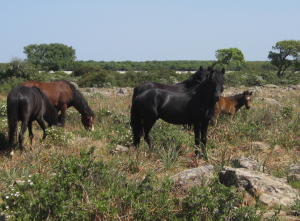
Parco Giara di Gesturi: this wide territory in Marmilla, at the heart of Sardinia, was the site of human settlements already during the Neolithic (6000-2700 B.C.) and has all the characteristic elements of the Mediterranean area: cork oaks, holm oaks, downy oaks, myrtles and strawberry trees. There are also cyclamens, rockroses and wild orchids, but also rare species like Morisia monantha, a very small plant flowering from January to April. Here live the last wild horses in Europe, Giara horses.
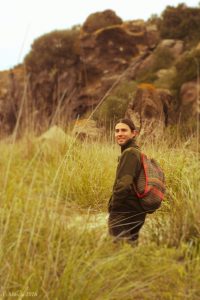
Azienda agricola Sa Laurera, Villanovaforru (South Sardinia): Francesco Mascia, a 30-year-old from Cagliari, is a passionate naturalist and author of about 80 scientific publications. He has family and has created this small agricultural company at the heart of Marmilla, voted to ecological sustainability, the respect of rurality and the rediscovery of ancient cultivation and management methods, among which dryland farming, crop rotation, fallow and hand-made work. He also works for the recovery of historic biodiversity, ancient varieties, local varieties and wild plants of an ethno-botanical interest. Furthermore, he can be your botanical and naturalistic guide of the area.
You can find many other oasis, naturalistic reserves, parks, museums and eco-museum on www.italianbotanicalheritage.com, “luoghi“, “Sardegna“ and choose the category that interests you the most; alternatively, you can scroll down the list of botanical places for each province.


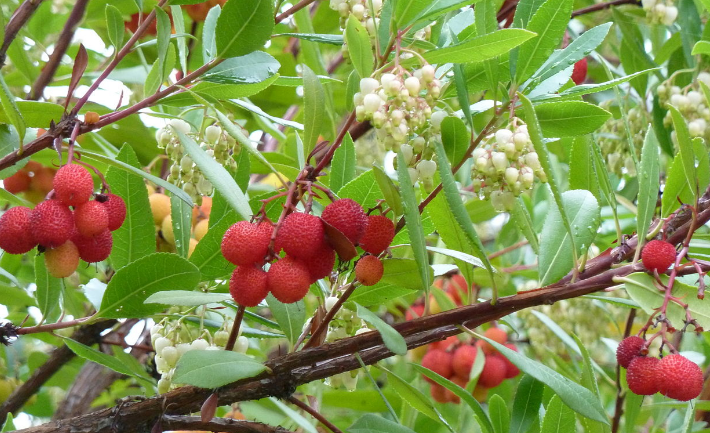

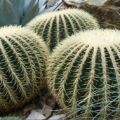
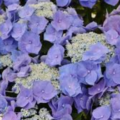

Rispondi